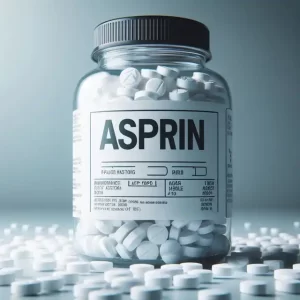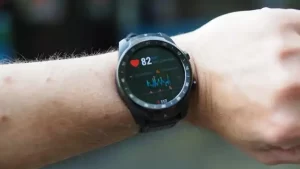Transmission dynamics of COVID-19 pneumonia and non-pharmacological intervention
Transmission dynamics of COVID-19 pneumonia and non-pharmacological intervention
Science: Transmission dynamics of COVID-19 pneumonia and non-drug intervention. On November 24, 2020, a research group led by Yu Hongjie from the School of Public Health, Fudan University, China, joined with the Hunan Provincial Center for Disease Control and Prevention of China, the National Institutes of Health and other teams in the transmission dynamics of new coronavirus pneumonia and non-drug interventions Significant progress has been made in the research field of prevention and control effects. The relevant results were titled “Transmissionheterogeneities, kinetics, and controllability of SARS-CoV-2”, which were published online in the top international academic journal Science in the form of Fast Track Research Article on November 24 magazine.

The previous research of Yu Hongjie’s group has clarified the age-specific differences in susceptibility to COVID-19 pneumonia and the impact of changes in population contact patterns after the implementation of non-drug interventions on the spread of COVID-19 pneumonia. Related articles were published in Science in early April.
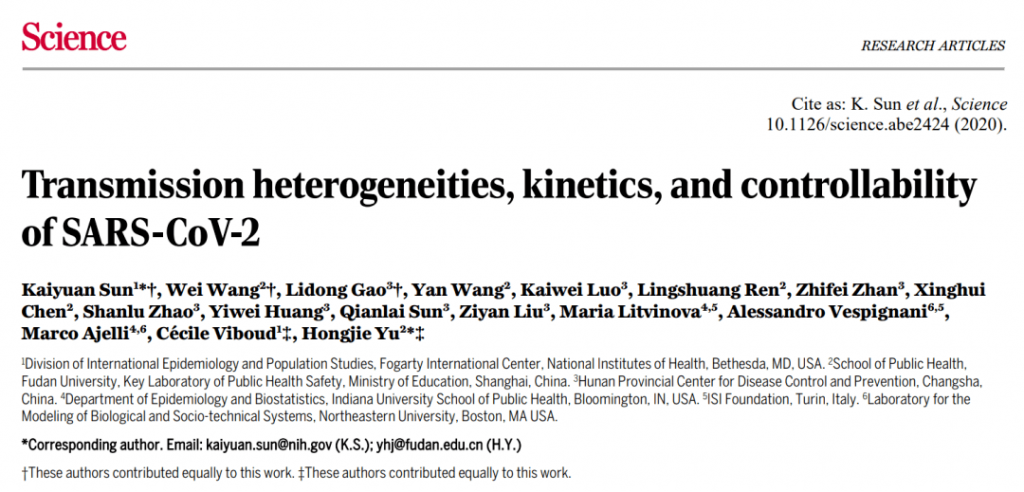
However, the transmission mechanism of COVID-19 pneumonia driven by factors such as demographic characteristics, disease severity, and exposure patterns (such as type of exposure and cumulative exposure time) is unclear. In addition, during the COVID-19 pneumonia pandemic, especially in the absence of a COVID-19 vaccine, how can interventions for individuals and groups regulate the spread of COVID-19 pneumonia? How to make the intervention measures not only consider the dynamic characteristics of the transmission of COVID-19 pneumonia, but also minimize the socio-economic cost?
Answering these key scientific questions can clarify which populations are most effective in controlling the spread of COVID-19 pneumonia, and then formulate, adopt and adjust intervention measures in a timely manner. To this end, Yu Hongjie’s research team conducted an epidemiological model study based on the confirmed cases of SARS-CoV-2 infection in Hunan Province from January 21 to April 2, 2020 and the tracking data of their close contacts. , It aims to explain the heterogeneity of the transmission of the new coronavirus at the individual level, the transmission dynamics characteristics of the COVID-19 pneumonia after the implementation of non-pharmaceutical interventions, and the impact of individual and group interventions on the transmission of COVID-19 pneumonia.
The results of the study on the heterogeneity of the transmission of the new coronavirus at the individual level show that after the implementation of non-pharmacological interventions, the probability of the transmission of COVID-19 pneumonia (7.2%, 95% CI: 1.2-19.6) in family contact is significantly higher than that of contact between relatives (1.7%, 95% CI: 0.4-5.6%), social contact (0.9%, 95% CI: 0.2-2.7%) and community contact (0.4%, 95% CI: 0.1-1.1%). At the same time, the degree of contact between individuals and the cumulative contact rate (CCR) are quite different among different contact modes. The degree of contact between individuals in the family and relatives and the cumulative contact probability are significantly higher than that of social and community contacts. The risk of transmission of COVID-19 pneumonia increases with the increase in contact time. Each additional day of contact time will increase the risk of transmission by 10% (95% CI: 5-15%) (Figure 1).
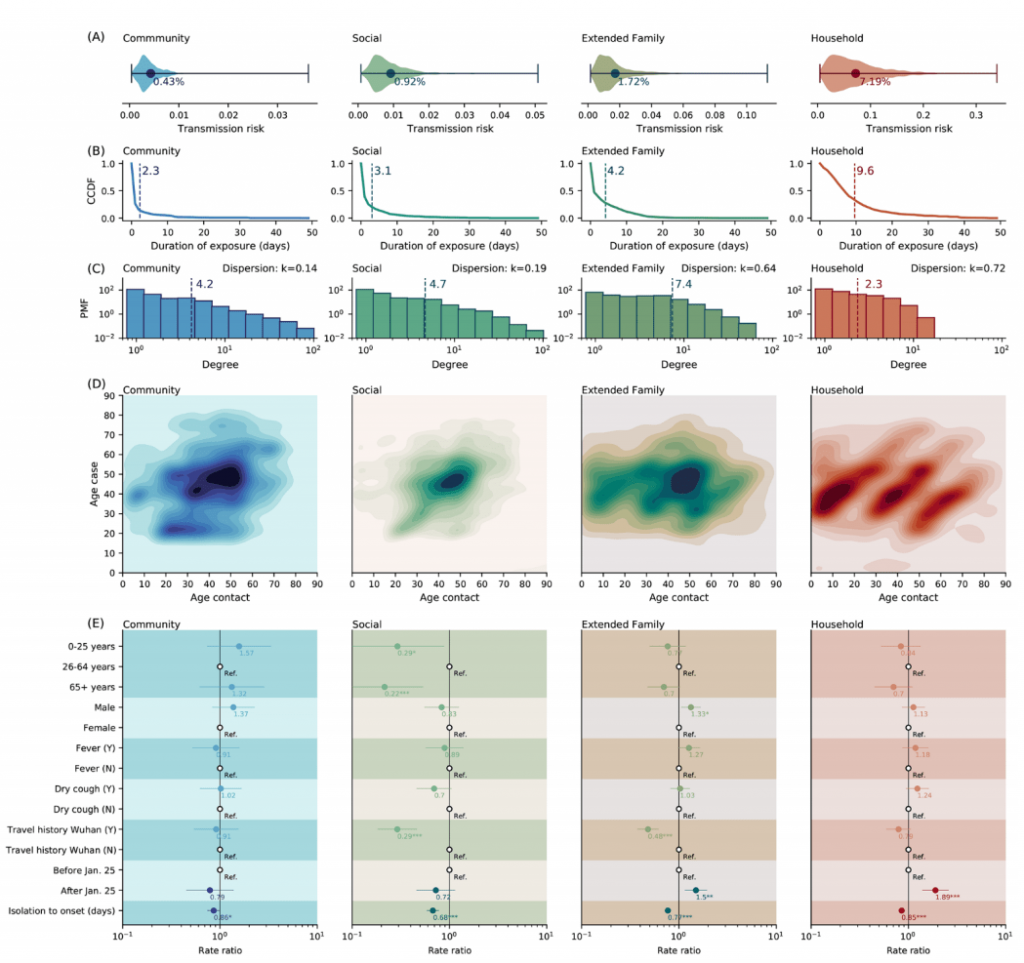
In order to clarify the characteristics of the transmission dynamics of COVID-19 pneumonia after the implementation of non-pharmaceutical interventions, this study reconstructed the matched infectious persons-infected persons (infector-infecteepairs), and estimated the transmission dynamics parameters based on the reconstructed transmission chain. The results showed that the median of the serial interval and the generation interval were both 5.3 days, and the pre-symptomatic transmission rate was 63.4% (95% CI: 60.2%-67.2%). Timely and rapid isolation measures can block the contact between potentially infected and susceptible persons in advance, and limit disease transmission to the early stage of infection. The earlier the case isolation time, the higher the proportion of pre-symptomatic transmission. The corresponding series interval is The shorter the generation interval.
Considering the implementation time of non-pharmacological interventions, this study is further divided into three phases (Phase 1: Before January 27; Phase 2: From January 27 to February 4; Phase 3: After February 4) The transmission dynamics characteristics of COVID-19 pneumonia are analyzed. The results showed that from the first to the third stage, the proportion of cases detected through active surveillance rose from 22% to 66%, and the median time interval from onset to isolation increased from 5.4 days (interquartile range: 2.7, 8.2) Shortened to -0.1 days (interquartile range: -2.9, 1.8), the basic reproduction number was reduced from 1.75 to 1.01.
Subsequently, a mathematical model was used to reconstruct the distribution of intergenerational intervals and infectious periods without intervention. The results showed that when no intervention measures were implemented, the infectivity of the case peaked 0.1 day before the onset of the disease, 87% of the transmission events occurred within 5 days before the onset of the case and within 5 days after the onset of the case, and the pre-symptomatic transmission rate was about 53%. In addition, the study also found that the faster the implementation of isolation measures, the higher the proportion of case isolation, and the greater the reduction in basic reproductive numbers, that is, the better the effectiveness of non-pharmaceutical interventions, but it is necessary to compare the individual level and the group level. The combination of interventions in order to achieve the best effect of controlling the epidemic (Figure 2).
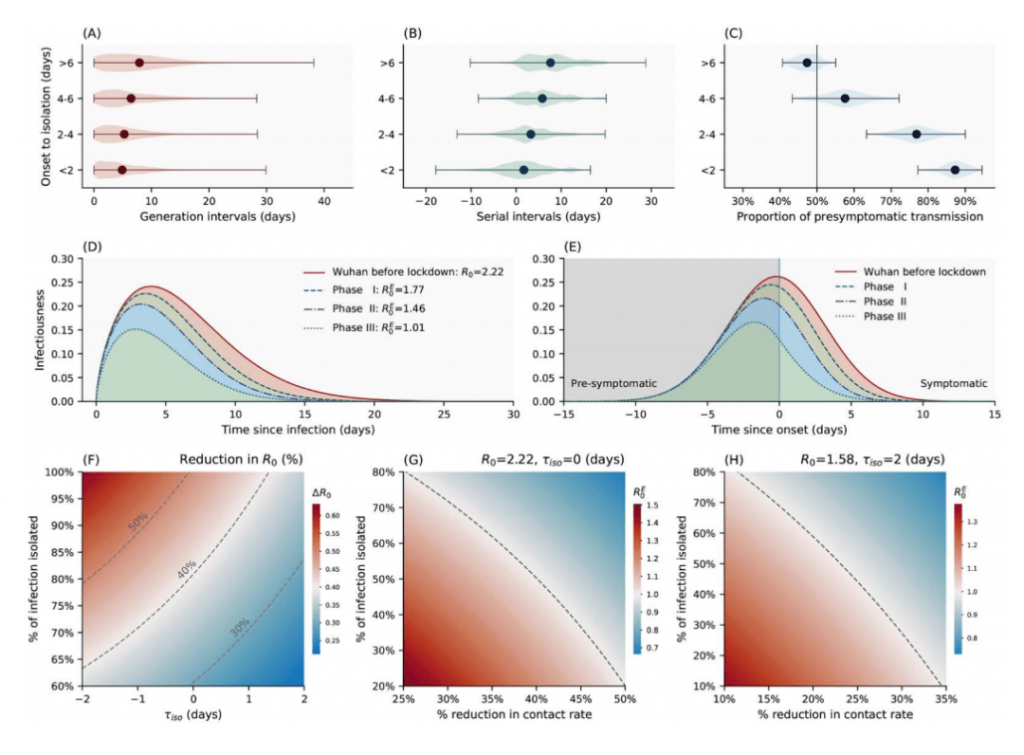
This study reveals the heterogeneity of the spread of COVID-19 pneumonia determined by the exposure pattern and non-pharmaceutical interventions, estimates the risk of transmission of COVID-19 pneumonia under various exposure modes, and analyzes the impact of interventions at the individual and group levels. The model and the impact of the spread of COVID-19 pneumonia, quantitatively evaluated the relative contribution of biological factors, behavioral factors, and non-pharmacological interventions to the spread of COVID-19 pneumonia. The research results are designed to provide important scientific evidence for countries around the world to relax and/or re-implement interventions, so as to minimize the impact of COVID-19 pneumonia on global health, society and economy.
Sun Kaiyuan, a postdoctoral fellow at the National Institutes of Health, Wang Wei, a doctoral student at the School of Public Health, Fudan University, and Gao Lidong from the Hunan Center for Disease Control and Prevention are co-first authors, and Yu Hongjie and Sun Kaiyuan are co-corresponding authors. This research was supported by the National Science Fund for Distinguished Young Scholars (81525023) of the National Natural Science Foundation of China.
(Source: Sohu’s Transmission dynamics of COVID-19 pneumonia and non-pharmacological intervention)
(Transmission dynamics of COVID-19 pneumonia and non-pharmacological intervention)
